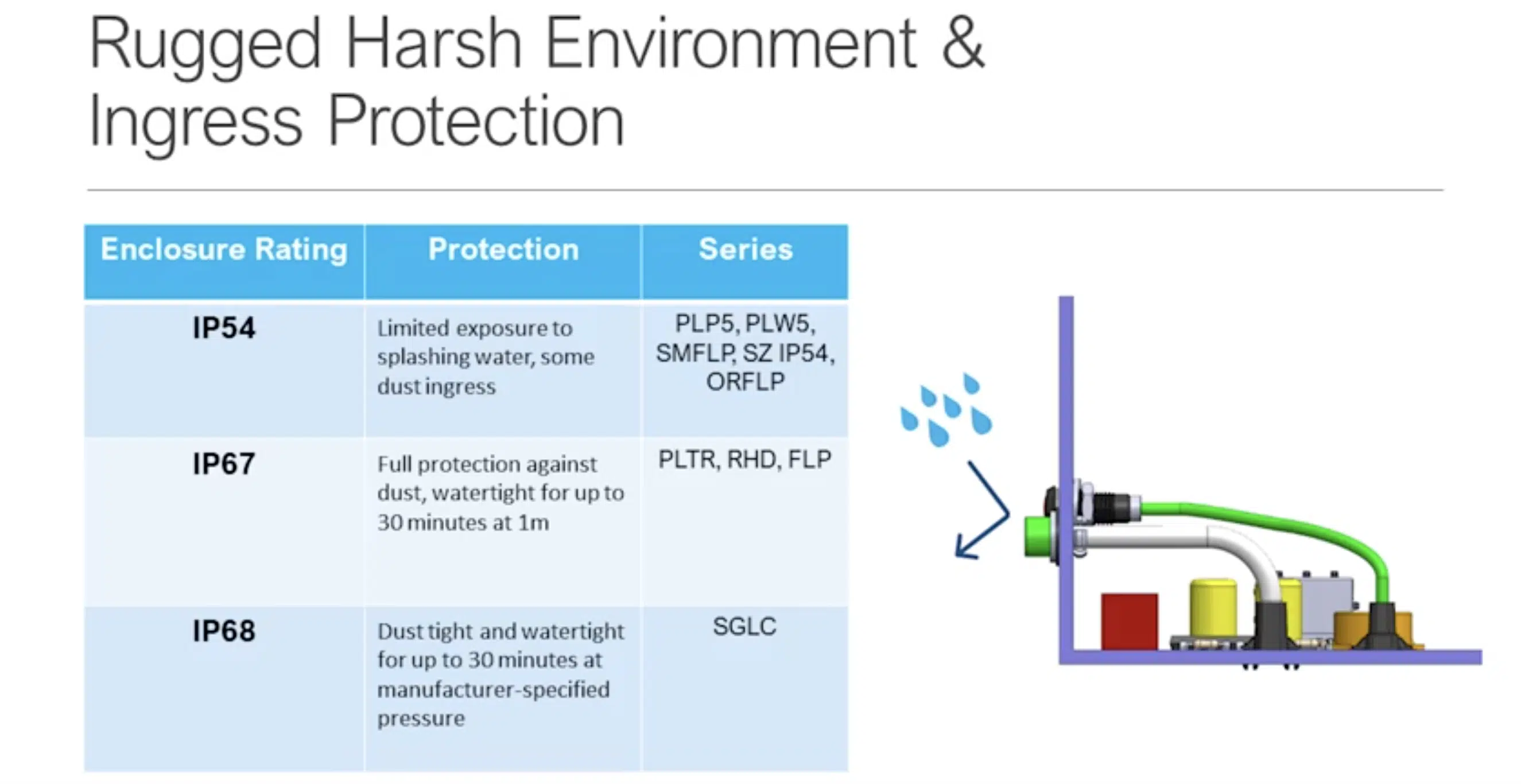Introduction
In this article, we will look at common challenges with new designs and redesigns. There are common challenges with new designs that every design engineer encounters. No matter what application the design engineer is working on, it requires careful consideration of various factors such as the type of LED being used, and the environment in which the LED will be used. The visibility of the LED and the power requirement for the LED light pipe should be considered at the beginning of the design to help with these factors. Light transmission is also very important as it needs to emit the proper luminosity from PCB to the user interface. The team at Bivar engages early in the design process to help identify and assess key factors in the operating environment. In many applications like those in the agricultural industry, temperature extremes, exposure to dust, dirt, liquids, shock and vibration are important factors to consider to ensure the LEDs illuminate well and are long lasting.
Design & Redesign
We look closely at temperature variables. Rugged, harsh environment needs ingress protection, size, and form factors along with lifecycle needs. Temperature is one of the most important factors when designing with LEDs. The performance of LED technology is greatly affected by temperature and it is important to take this into account when designing L e D based products and services. LEDs are typically sensitive to temperatures between -40 degrees Celsius and +85 degrees Celsius, and should be designed to operate within these limits. If the temperature is too high, the performance of the LED will be reduced. Conversely, if the temperature is too low, the LEDs will not be able to operate at full capacity. In addition, it is important to consider the heat generated by the LEDs themselves. As LEDs generate heat, it is important to ensure that the heat is dissipated effectively so as not to damage the LEDs or the surrounding components.
Proper heat dissipation should be incorporated into the design of LED applications to ensure optimal performance by providing light pipes, engineers cannot only protect LEDs from excessive heat generation, but also protect their components from exposure to high temperatures. A light pipe acts as a heat sink, drawing heat away from LEDs and other components of the system, keeping the system operating at ideal temperatures and improving longevity. Now, when designing LED applications, it is important to consider the environment in which the product will be used. For instance, LED technology is often used in outdoor applications where it is subject to range of environmental conditions such as wind, rain, dust, and temperature fluctuations. As such, it is important to ensure that the design of the LED product or service is able to withstand these conditions. The design of LED products and services must also consider the effects of vibration shock and other physical forces.
These can cause damage to the LEDs and other components, and so the design must be robust enough to withstand these forces. Ingress protection is an important factor to consider when designing L E D applications. Ingress protection references to the ability of the product or service to prevent dirt, dust, and moisture from entering and damaging the LEDs and other components. This is especially important for outdoor applications as these conditions can cause damage to the LEDs and other components. When designing LED products and services, it is important to consider the ingress protection rating, which is a measure of the product’s ability to prevent dirt, dust, and moisture from entering. The higher the rating, the better the product’s ability to protect against these conditions. IPI rated lenses and light pipes offer a robust means of isolating LEDs from harsh and inhospitable environments, utilizing a combination of durable material and specialized coatings.
IPI rated lenses are designed to provide a dependable seal and protection from a variety of elements such as dust, water, temperature, extremes, and corrosion. Additionally, light pipes provide a shield from UV radiation, ambient temperature, shock, and vibration, and mechanical damage while delivering light from the LED through a highly efficient path when used with LEDs, both IP rated lenses and light pipes provide assurance that your components remain isolated from harsh conditions and continue to operate as expected. Bivar’s newest offering SGLC LED not only provides protection from harsh environment, but also provides an indicator in the event the protection gets compromised. Finally, size and format are important factors to consider when designing LED applications. The size and format of the LEDs and other components must be considered when designing the product or service as they must fit within the available space.

This is especially important for products and services designed for use in tight spaces or with limited space. The size and format of the LEDs and other components must also be considered when designing the product or service. These factors must be considered early in the design process when designing with LEDs as they can affect the proper and effective communication of vital data and user experience. Light bleeding is another problem to consider, especially when there are multiple LEDs close to each other. To save space on the machine or device, light pipes help with these challenges. It’s important that there is no crosstalk to avoid confusion for the end user, especially in a data center where servers and routers are communicating with multiple LEDs in use. Using zero light bleed light pipes can eliminate crosstalk hotspots and fade outs are also issues that need to be considered pairing The correct light pipe for each of these scenarios protects the LED and provides ingress protection for the application. Another key factor to consider with new design is cost. The cost of materials and parts should be taken into account as some materials could be more expensive than others, but use and compatibility of materials is also important.
The final factor to consider and to avoid a redesign is the ease of installation, especially when the light pipe needs to be installed in a tight or hard to-read space. To ensure a successful installation, it is important to design the light pipe with easy to install components and to provide clear instructions for installation and maintenance. Sometimes the redesign is needed when issues or redirections arise. One factor to consider is how this is different from the first design and what changes need to be made. You may need to consider your board level design. Maybe having a vertical light pipe and switching to a right angle light pipe can help save space, or maybe you need to change from a rigid light pipe to a flexible light pipe to have the light weave through some obstacles in your design. Also, factoring in the application environment is important.
While the device now be exposed to contamination or moisture, maybe you need an IP rated light pipe for the LED, you might have to consider humidity and high temperature, so you would need to consider PMMA if you also must adjust to a ruggedized environment. You might need to consider board mounted adapters or additional mechanical retention hardware and crush ships to withstand high shock and vibration. Lastly, while testing the design, maybe you notice there is light bleed and crosstalk, so you will need to switch to a light pipe that prevents light bleeding. There are many more innovative solutions provided by Bivar for light transfer from LEDs mounted on PCBs to the panel that provide reliability as well as cost effectiveness for customers. These solutions are designed to provide superior performance and efficiency and can be used in a variety of applications. LEDs are being placed into products that are shaped and used in new and different ways. Bivar product solutions are created in conjunction with customers addressing real customer needs. Bivar is an innovative leader in the LED indication and illumination industry. Our team of experienced engineers utilize cutting edge technology to create cost effective, highly efficient products that can be used in a variety of applications.







